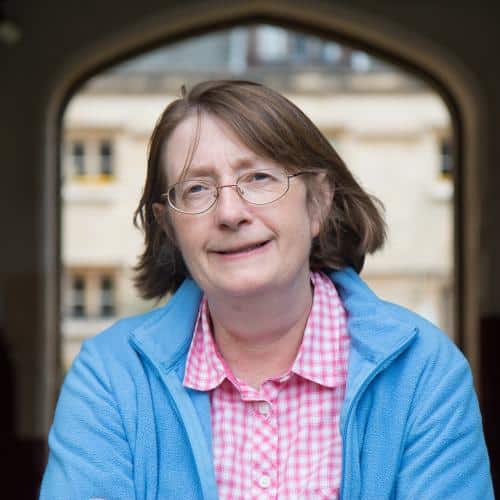
Professor Ann Chippindale FRSC
College Lecturer in Inorganic Chemistry
Professor of Structural Chemistry, University of Reading
Education
MA DPhil (Oxford)
My own academic career began in New College, Oxford where I was one of the first female undergraduates (the College is nearly 650 years old). My tutor inspired me to focus on inorganic solids and their properties– a fascinating area of research – and over the years I have investigated a range of materials with applications important in everyday life including transition metal oxides (used in batteries and as high-temperature superconductors) and zeolites (used in many areas including as catalysts, toxic heavy metal grabbers, water softeners and in gas storage). I am currently investigating transition-metal cyanides (in collaboration with Dr SJ Hibble, Oxford). The first example of such a material was ‘Prussian Blue’, which was originally used as a pigment, but is being investigated today, some 300 years since its discovery, for use in batteries and in hydrogen storage. Many cyanides show interesting physical properties, such as negative thermal expansion (NTE), which means that they contract when they are heated. (Most materials, for example, iron railway lines, expand on heating). Cyanides are not just chemical curiosities, but are model compounds for a number of applications (e.g. for the design of zero expansion materials used in optical and computer components in outer space where there are large variations in temperature). Part of our work involves trying to understand and explain why these materials show this remarkable behaviour.
Underpinning all my work is the need to know how the atoms are arranged to make up the structures of these materials. This can be achieved using crystallographic techniques, such as X-ray and neutron diffraction. This is either carried out in a university laboratory or at an international facility, such as the X-ray synchrotron at the Diamond Light Source or neutron sources at ISIS and the Institut Laue Langevin in Grenoble, France. Probably the thing that gets me out of bed in a morning is the prospect of determining a crystal structure or arrangement of atoms or that no one in the world has ever seen before – how exciting is that?








